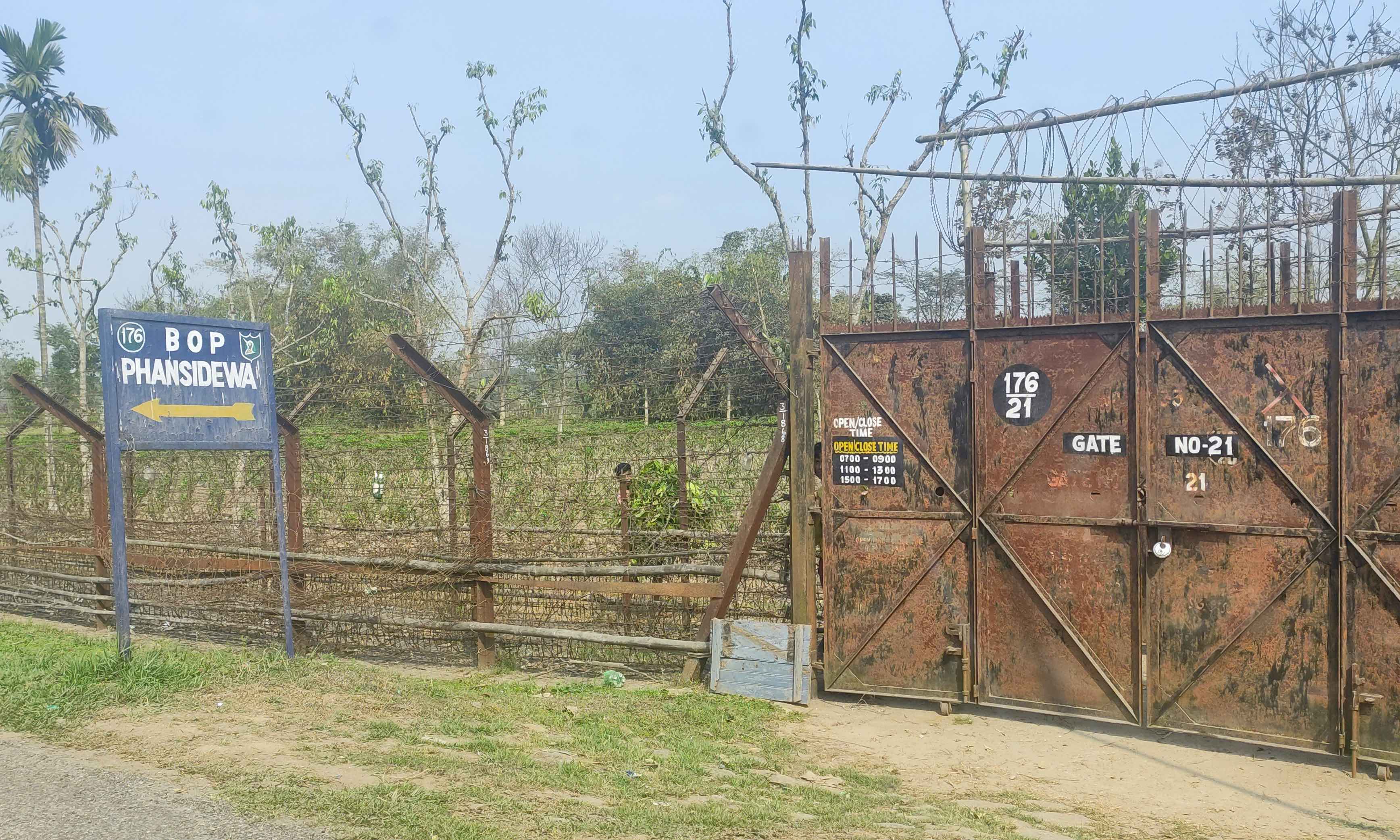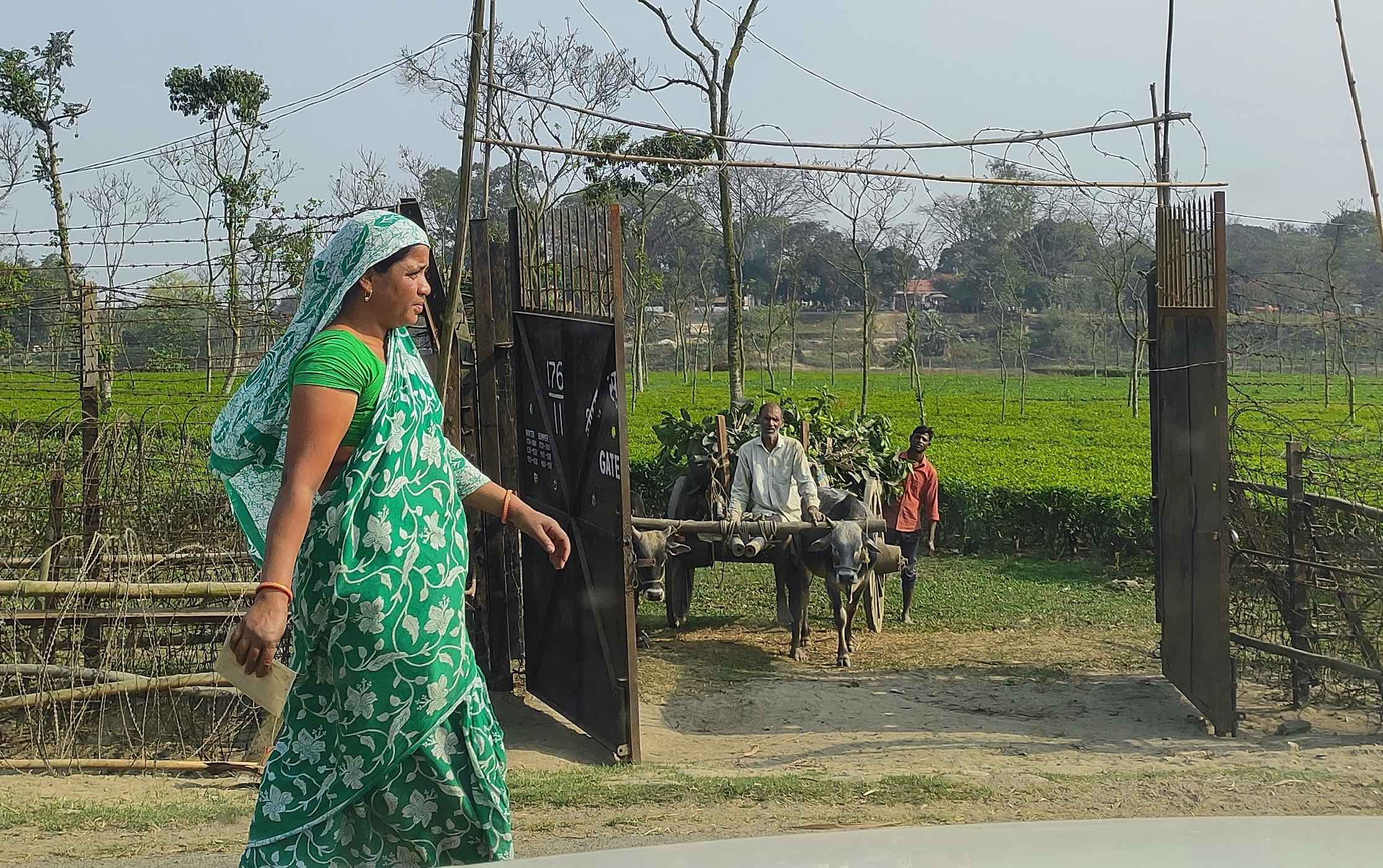Informal cross-border trade in the Bay of Bengal region is an integral part of local economies and has many broader economic impacts. It is categorized into three types: Unregistered traders or firms that operate outside the formal economy; registered firms that evade regulations and duties, and registered firms partly evading regulations through illegal practices.
Most of the research on this topic has focused on estimating levels of informal trade. Comparatively little effort has gone into understanding why informal trade occurs in the first place. We also don’t know enough about related issues such as contract enforcement, price formations, and quality control, or how resilient informal trade is to shocks.
To better understand these dynamics, we were part of a team that conducted a comprehensive primary survey in the town of Phansidewa in Siliguri, West Bengal on the India-Bangladesh border to understand the diverse aspects of informal cross-border agrifood trade. The field visit in February 2023 involved interaction with local traders, customs officers, border forces, school teachers, retired government employees, leaders of the business community, the gram panchayat (village council) head, zilla parishad (district council) members, informal goods carriers, intermediaries, linkmen, wholesalers, and retailers.
Our research aims were to understand why informal trade occurs, identify which agrifood are traded informally, address the magnitude and pattern of informal trade, and identify the factors that are driving such trade flows. We found complex informal trade networks operating, driven partly by the absence of accessible formal or quasi-formal trade options and other diverse factors.
This research is part of a comprehensive study on bilateral agrifood trade between India and Bangladesh, involving both informal trade (through primary data) and formal trade (through secondary data) being conducted by IFPRI with its national partner, the Indian Council for Research on International Economic Relations (ICRIER). This study is funded by the Bill & Melinda Gates Foundation (BMGF) through the project Regional Trade and Agricultural Transformation in the Bay of Bengal Countries.
Findings and insights on informal agrifood trade from Phansidewa
The border town of Phansidewa is located 23 km from the India-Bangladesh border, which is 4000 km long. Physical fencing runs for most of the length of the border—around 3000 km—while the Mahananda River also forms a short natural boundary with Bangladesh. Phansidewa is a useful example of how persistent underdevelopment in India-Bangladesh border areas provides impetus to informal trade, making use of the historical linkages that precede the 1980s-era fencing of the international border.
ICRIER-IFPRI Survey
The now abandoned border haat (trading post) in Phansidewa.
Through the 1970s, Phansidewa community block area was commercially active due to the 1957 Trade Agreement between India and Pakistan, which allowed border trade in specified commodities “in order to meet the day-to-day requirements of the people living within a ten-mile radius of the border between West Bengal, Assam and Tripura on the one hand and East Pakistan on the other.” Phansidewa functioned as a river port (bandar gaach)—and a trading post (border haat) was the hub of commercial activities supplying the nearby towns in both countries. However, the decision by India in the 1980s to erect border fencing gradually diminished free movement and the haats eventually closed down.
What gets traded informally from Phansidewa?
With local formal trade all but eliminated, there were still substantial incentives for informal trade to reap economic opportunities across the border, with agrifood trade forming a significant chunk of it. Our interviews indicated that while fast-moving consumer goods (FMCG) such as body spray, toothbrushes, detergents, and processed tea dominate in terms of value, there is a substantial volume of informal agrifood exports from India to Bangladesh.
The major informally exported items from Phansidewa to Bangladesh are rice, pulses, wheat, sugar, salt, hybrid rice seeds, vegetable seeds, pesticides, fertilizers, spices such as cardamom and cinnamon, edible oil, and agriculture machinery spare parts. Informal imports into India from Bangladesh, meanwhile, are relatively lower. Interestingly, desi (local) variety of seeds are imported into India as these are organic and perceived to be of better quality. Another notable informal import is the culturally-important hilsa fish, with demand significantly increasing during holidays such as the fall Durga Puja festival.

ICRIER-IFPRI Survey
Fencing and gate in the Phansidewa border area.
How is informal trade organized?
Informal trade is facilitated by eight to ten local traders, called “linkmen” or paraparkari, and local intermediaries called “carriers.” Goods procured from the wholesale market at Siliguri (approximately 20 km away) by the retailers at Phansidewa are bought by the linkmen; about 50 carriers take the goods across to the partners on the other side of the border. About 80% of the carriers are women, as most of the border points have no women security personnel and women travelers are less likely to be searched or frisked. In one day, the carriers make two to three trips on foot from India to Bangladesh for export and are paid Rs 200-250 (about $2.50-$3) per trip by the linkmen. In terms of the profit margin, the case of wheat is illustrative—wheat procured from the wholesaler in Siliguri at Rs 34/kg is sold at Rs 65/kg by shopkeepers across the border in Bangladesh to consumers.
How is informal trade happening across the border?
Goods move across both the meandering Mahananda River and the border fence. The river is not very deep and women carry the small bundles shielded by their sarees across areas where largely unchecked mining of sand and stones takes place at night. Since the fencing is erected 100 yards inside the border, small bundles are also carried across by villagers allowed to pass through the gates at set times to tend to their small tea plantations in the portion between the fence and the international border. The informal trade network is also facilitated by the annual Milan Mela fair organized by the Indian and Bangladeshi governments, which allows relatives living across the border to reunite and meet physically.
What are the formal trade challenges faced at Fulbari land port?
The Fulbari land customs station (LCS) is only 14 km from Phansidewa. However, its complex and cumbersome customs processes and procedures, slowed further by incomplete digitization, are a major impediment to formal trade. In the case of agrifood products, the regulations are also extremely stringent. For example, parboiled rice undergoes rigorous testing at the Central Referral Laboratory in Kolkata, with exporters obligated to cover penalties of 60% of the price of export in case of testing failures. Such procedures may be the leading factor driving informal exports of parboiled rice to Bangladesh.
The “Suvidha” Vehicles Facilitation System introduced by the West Bengal State government in 2022 has further discouraged formal trade through Fulbari. The Suvidha system was intended as a remedial measure for the high parking costs being incurred by transporters at the extremely busy land port at Petrapole, and then subsequently implemented at Fulbari and other land ports in West Bengal. However, this means that transporters incur the mandatory vehicles facilitation pass fee of Rs 10,000 ($120)—even though the traffic volume at Fulbari is generally less than that of Petrapole.
How are border haats facilitating quasi-formal trade?
The revival of border haats is the pragmatic initiative adopted by the two countries to provide a formal arrangement for trade between the local communities. The first border haat was inaugurated in 2011 at Kalaichar in the West Garo Hills district of Meghalaya. With the recent opening of the border haat at Bholaganj in Meghalaya, there are currently five total operating on the India-Bangladesh border—however, none are in West Bengal. Sixteen more are planned, with locations not yet established.
These makeshift weekly markets have been quite successful at generating livelihood and income opportunities for local communities. In fact, four of the operational border haats have increasingly drawn local women into cross-border trade, in addition to encouraging informal traders to shift to the formal channel. A study by ICRIER on Trade Facilitation Measures to Enhance Participation of Women in Cross-border Trade in BBIN found that women constituted 34%-36% of local Indian traders licensed to operate at the border haats.
Conclusion and recommendations
However, as of now there is no operational border haat in the state of West Bengal. In this context the revival of the haat at Phansidewa would be a step in the right direction. Meeting another longstanding demand of local communities for the Tetulia corridor—which would link the Indian towns of Chopra (North Dinajpur district) and Maynaguri (Jaipaiguri district) in northern West Bengal with passage through the Tetulia Upazila in Bangladesh—would also open up greater economic opportunities for the entire region.
ICRIER Team: Nisha Taneja is a Professor, Sanjana Joshi is a Senior Fellow, and Sanya Dua is a Research Associate. IFPRI Team (New Delhi-based): Abul Kamar is a Senior Research Analyst with IFPRI’s Development Strategies and Governance (DSG) Unit; Sunil Saroj is a DSG Research Analyst; Devesh Roy is a DSG Senior Research Fellow; Mamata Pradhan is a DSG Research Coordinator.
We thank the Bill & Melinda Gates Foundation (BMGF) for funding support to undertake this study under Bay of Bengal Initiative for Multi-Sectoral Technical and Economic Cooperation (BIMSTEC) work with IFPRI. The views expressed here are those of the authors and do not necessarily reflect the views of the donor or the authors’ institutions. The usual disclaimer applies.







